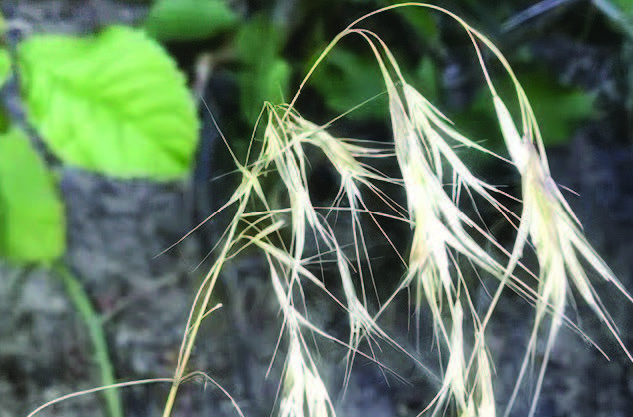Envu Solutions – Downy brome

Why you should care
- Displaces native and desirable forage species such as bluebunch wheatgrass, rough fescue, and needle-and-thread grass
- Alters fire regimes: Creates dense, early curing fine fuel beds that significantly increase wildfire risk and frequency
- Shortens the growing season for forage: Grows and sets seed earlier than most perennials
- Reduces biodiversity and disrupts ecological succession in grasslands and open forests
- Aggressive invader in disturbed and overgrazed sites, gravelly soils, roadsides and rights-of-way
Quick facts
- Scientific name: Bromus tectorum
- Common names: Downy brome, cheatgrass
- Plant type: Winter annual grass
- Group: Poaceae (true grass family)
- Native to: Eurasia; invasive in North America
- Seed longevity: Short (one to five years), but prolific seed production
Biology and growth habit
- Germinates in fall or early spring
- Grows rapidly in early spring, outcompeting native species
- Sets seed by early summer, often before control measures can be applied
- Seeds are easily spread by equipment, animals and wind
- Highly responsive to soil disturbance and nitrogen input
Management and control - integrated management is key
- Prevention:
- Avoid overgrazing, especially in fall and early spring
- Clean equipment and vehicles
- Use weed-free forage and gravel
- Cultural:
- Promote healthy perennial cover (e.g., crested wheatgrass, Sandberg bluegrass)
- Reseed with competitive native/perennial grasses after disturbance
- Mechanical:
- Spring mowing can suppress seed production if timed properly
- Chemical:
- Rejuvra® herbicide (indaziflam): Preemergence herbicide offering multiyear control in industrial and non-crop settings
- Timing is crucial: Apply at least two weeks prior to weed seed germination for control the following year
- Fire:
- Can increase invasion if native species aren’t well established post-burn
ID features
- Fine, drooping seedheads with long awns
- Hairy leaves and sheath (hence “downy”)
- Purple-tinged stems at the base in spring
- Emerges earlier than most native grasses
What land managers can do
- Monitor high-risk areas annually
- Act early — before it flowers
- Incorporate downy brome into your weed control strategy
- Coordinate with neighbors and agencies to manage cross-boundary infestations
- Talk to your Envu Range & Pasture specialist
No matter what kind of vegetation management problems you’re up against, Envu has a full range of solutions to help you take control.
For more information about downy brome, download the solution sheet or contact your local Territory Sales Manager for downy brome control strategies specific to your needs.
ALWAYS READ AND FOLLOW PESTICIDE LABEL DIRECTIONS. Envu and the Envu logo, are trademarks owned by Environmental Science U.S. LLC. or one of its affiliates. ©2023 Environmental Science U.S. LLC. All rights reserved.
